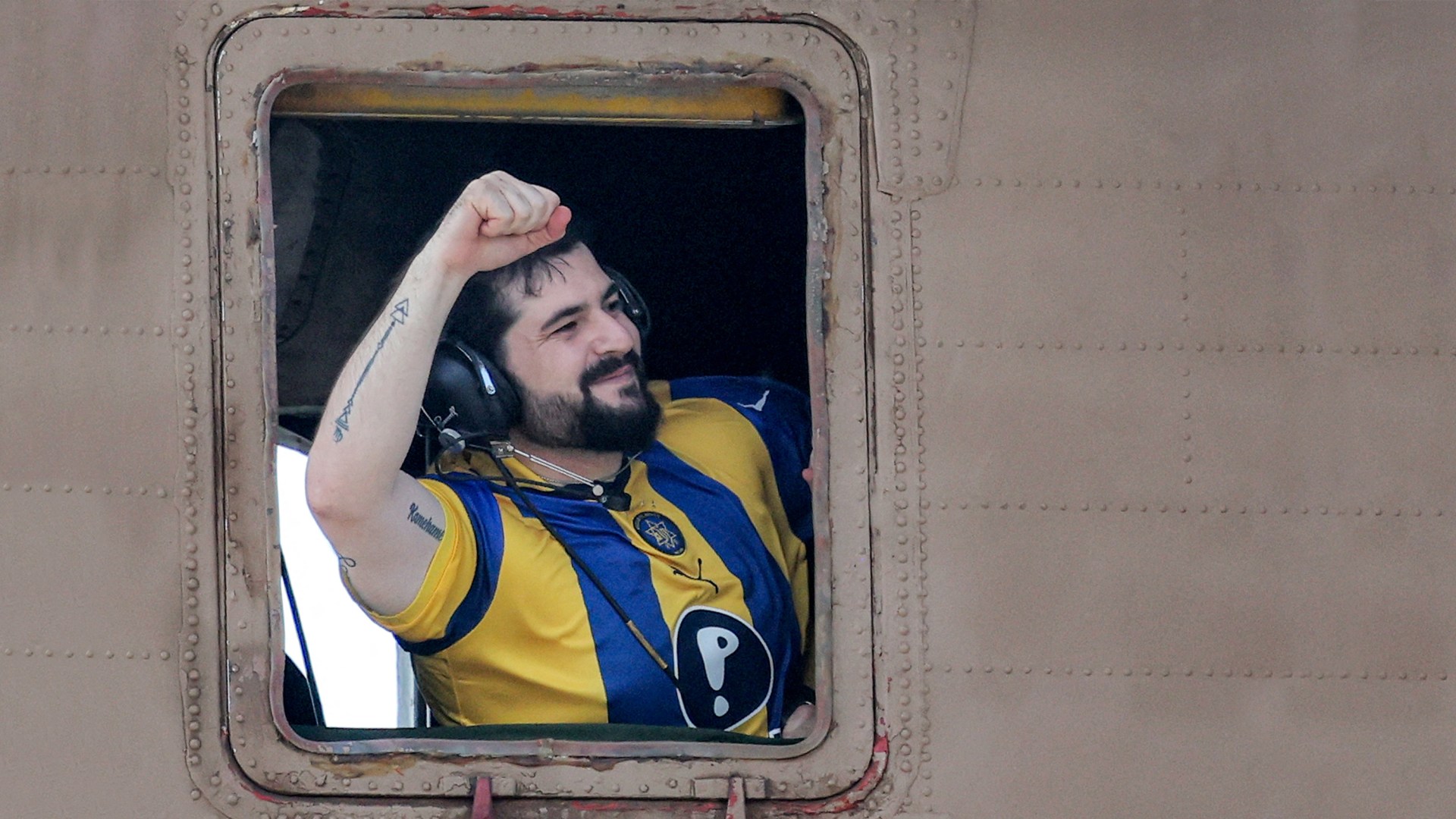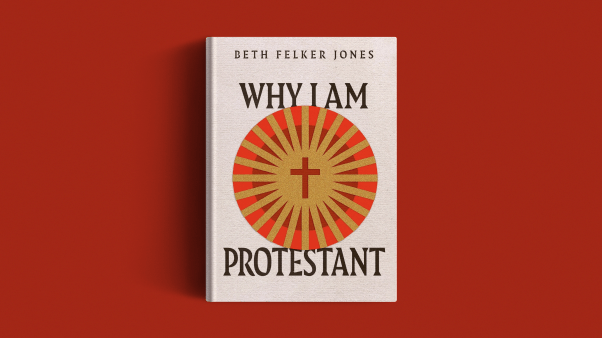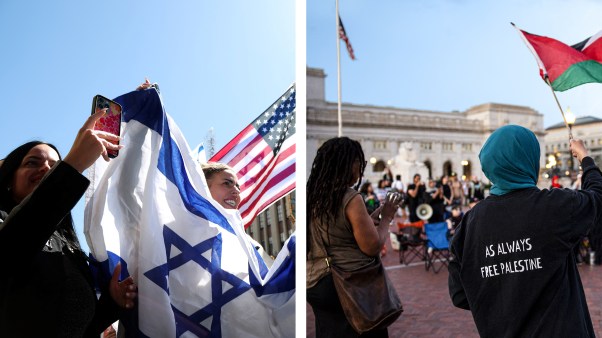Key Updates
October 13, 2025
Hamas released all 20 of the remaining living Israeli hostages Monday, Israeli military said. Meanwhile, Israel released nearly 2,000 Palestinian prisoners and detainees as part of the cease-fire deal brokered by US president Donald Trump to end the war.
A video released by Israel Defense Forces showed the father of released hostage Eitan Mor weeping with joy as he embraced his son. Mor, 25, was working as a security guard at the Nova Music Festival in Re’im on October 7, 2023, when Hamas members took him hostage.
Hamas said it would release the bodies of 4 of the 28 deceased hostages later Monday. Earlier, the group suggested that it did not know the location of all of the bodies.
Humanitarian groups are preparing to bring large amounts of aid into the Gaza Strip, which is facing a severe food crisis. Around 600 trucks of aid per day will soon start arriving in the territory under the cease-fire agreement, according to the Israeli defense body in charge of humanitarian aid in Gaza.
Trump, who spoke to Israel’s parliament, Knesset, Monday, called the deal “the historic dawn of a new Middle East.”
He added, “At last, not only for Israelis but also Palestinians, the long and painful nightmare is finally over.”
As Trump heads to a summit in Egypt with world leaders backing the cease-fire plan, many challenges still remain, including whether Hamas will agree to disarm and who will govern Gaza.
October 9, 2025
Two years and two days after the October 7, 2023, Hamas attack, Israel and Hamas agreed Thursday to stop fighting and to exchange hostages and prisoners. Gazans and Israelis took to the streets to cheer the news of a possible end to the war.
In Nazareth, Azer Ajaj, the president of Nazareth Evangelical College, said he was “overwhelmed with joy” when he first heard about the prospective cease-fire and deal between Israel and Hamas.
“This is what my church and I have been praying for personally throughout the war,” he told CT.
President Donald Trump, who brokered the deal, called the signing of the first phase of the peace plan “a momentous breakthrough,” and declared, “We ended the war in Gaza.” Hamas negotiator Khalil al-Hayya said he received guarantees from the United States and other mediators that the war was over.
Questions remain about other parts of the 20-point plan, including whether Hamas will disarm—a condition the group had previously refused—and who would govern Gaza. Yet the deal is the biggest step toward peace since the war began.
“This is a GREAT Day for the Arab and Muslim World, Israel, all surrounding Nations, and the United States of America,” Trump wrote on Truth Social Wednesday. “BLESSED ARE THE PEACEMAKERS!”
On Thursday evening, Israeli prime minister Benjamin Netanyahu met with his security cabinet to seek approval of the agreement. Once they approve, the full cease-fire will go into effect 24 hours later, according to government spokeswoman Shosh Bedrosian.
According to Trump, Hamas will return the roughly 20 hostages believed to be alive early next week. The deal also mentioned the release of the at least 26 deceased hostages; however, Hamas told negotiators that it doesn’t know where their bodies are located. A multinational task force will be formed to find the bodies.
In return, Israel will release 250 Palestinian prisoners serving life sentences and 1,700 Palestinians detained in the wake of the October 7 attacks. Israeli officials are finalizing a list of Palestinian prisoners they plan to free, and victims of their attacks have 24 hours to object.
As soon as Thursday, the Israel Defense Forces (IDF) could begin to withdraw from agreed-upon areas of Gaza, leaving them in control of about 53 percent of the Gaza Strip, Bedrosian said. Five border crossings would reopen, allowing aid to flow back into Gaza, according to Egyptian and Hamas officials. For months, Israeli restrictions, heavy fighting, and mobs have made it difficult for aid trucks to reach Palestinians, leading to a severe hunger crisis.
Following the October 7 Hamas attack, which killed 1,200 Israelis, the Hamas-run Gaza Health Ministry says the ensuing war against Hamas has led to the deaths of more than 67,000 Palestinians. The Ministry does not distinguish between civilians and combatants in its death toll. Israeli attacks have destroyed two-thirds of Gaza’s infrastructure.
“We have wept with those who weep, whether they are Arabs or Jews,” Ajaj said. “The possibility of such a deal means an end to the continuous suffering of the Palestinians in Gaza, the return of Israeli hostages to their loved ones, and perhaps even the potential for a new round of negotiations to reach a comprehensive solution to the Israeli-Palestinian conflict.”
This is the third cease-fire since the war began. Seeing previous cease-fires break down makes Ajaj “cautiously reserved” in his optimism. Yet he is hopeful because he knows both sides are desperate to see the conflict end.
“My concerns compel me to pray more intensely: that God would raise up Palestinians, Israelis, and allies from supporting nations to champion this deal and offer guarantees for its continuity,” Ajaj said.
Jamie Cowen, a Messianic Jewish lawyer in northern Israel, said distrust of both Hamas and Netanyahu’s government makes many wonder if the deal will hold.
“The people here are exhausted and hopeful for an end to the worst disaster and longest war to befall Israel in her modern history,” Cowen said. “Most feel like I do. We want an end to this, but we are wary based on past experiences.”
Trump’s 20-point plan, which he unveiled in late September during Netanyahu’s visit, also states the IDF would agree to withdraw completely from the Gaza Strip. Hamas members who “commit to peaceful co-existence and to decommission their weapons” would be given amnesty, and no resident would be forced to leave Gaza.
It also states that an apolitical transitional government made up of Palestinian and international experts would govern Gaza. This committee would be overseen by a new international “Board of Peace” headed by Trump and made up of other foreign leaders including former UK prime minister Tony Blair. Hamas would have no role in governing Gaza, and the whole territory would be demilitarized.
The plan calls on the Palestinian Authority to complete a “reform program,” at which point it can take back control of Gaza, and urges international investment to re-develop the territory. When that has advanced, “the conditions may finally be in place for a credible pathway to Palestinian self-determination and statehood, which we recognize as the aspiration of the Palestinian people.”
The deal is a stark change from Trump’s previous plan, which called for the voluntary evacuation of Gazans to other countries.
Danny Kopp, chairman of the Evangelical Alliance of Israel, offered his “concern for the many ways this deal could be foiled coupled with apprehensive hope for all the ways it could succeed.” He worries the US will lose interest and patience to secure all the goals of the second phase, including establishing a Palestinian governing body “that is deradicalized, pursues peace with Israel, and crushes the remnants of Hamas.”
He noted that as unimaginable as it was for Israel and Germany to become strong allies decades after the Holocaust, “can we imagine the same one day for Israelis and Palestinians?”














